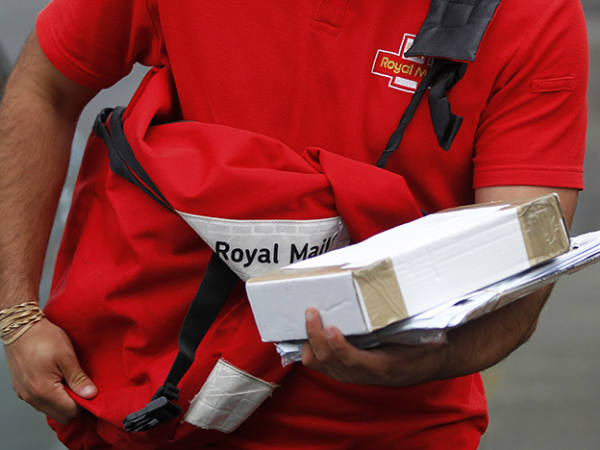Alternative asset investment trusts have seen tremendous growth in the last five years as investors hungry for income flock to the high yields on offer. The average UK direct property trust is yielding around 4.7 per cent, while the average infrastructure trust yields 4.8 per cent and the average renewable energy trust yields 5.7 per cent.
But due to high demand for income, premiums to net asset value (NAV) on alternative asset trusts have shot up with the property, renewable energy and infrastructure sectors trading on average premiums of 4.5, 10.2 and 12.7 per cent, respectively.
Darius McDermott, managing director of Chelsea Financial Services, says: "Alternative assets are very popular right now because traditional equity and bonds have their own issues. Bonds face a difficult time with the prospect of interest rates going up and, although equities are offering more income, they don’t look cheap, so everybody is looking for alternative income and it’s quite difficult because everybody is chasing the same assets."
High premiums should make investors think carefully about investing at the moment as a sudden dip in sentiment could cause them to fall. And if you have bought at the top of the market, this could lead to capital loss.
"Don’t just buy on yield; try and understand where the yield is coming from and whether it’s inflation linked," says Charles Cade, head of investment companies research at Numis Securities. "It’s often better for investors to buy when trusts issue new shares [as these will often be issued at closer to NAV than the secondary market]."
But if you are planning to invest for five or more years, investing in these trusts could still be attractive, despite the high premiums.
"Say you’re getting a 6 per cent yield from a fund that is trading at a premium of 15 per cent," explains Mr McDermott. "You’re effectively paying more than two years of yield to get the income. If you’re buying it for five to 10 years that’s fine, but if you’re looking to hold it for a shorter period of time that could eat into the yield you get."
Property
Property has enjoyed strong demand in recent years, with four of the five investment trusts that grew assets the most during the past five years investing in this sector.
"Commercial property can have a role to play in many diversified investment portfolios," says Patrick Connolly, certified financial planner at Chase de Vere. "It can provide long-term growth prospects, consistent and [growing] levels of income and with its diversifying characteristics it also gives some protection from stock market falls."
Investing directly in a fund that owns commercial property, such as office blocks or shops, also offers potential capital growth from the underlying value of the buildings. As well as these assets, a new range of specialist property trusts are making healthy returns from student accommodation, care homes and online retail warehouses, often at less of a premium to the more established funds. Many of these benefit from very long-term inflation-linked leases.
Tritax Big Box Reit (BBOX) invests in the 'big box' warehouses used by online retailers to store the increasing amount of goods sold online. Its assets increased 979 per cent from £200m at launch in 2013 to more than £2bn at the end of June this year.
Mick Gilligan, head of fund research at Killik & Co, has recently invested in Civitas Social Housing (CSH), which raised £350m in an oversubscribed initial public offering in November. The trust invests exclusively in existing portfolios of built social homes in England and Wales. It does not develop or manage social homes directly but works with registered providers who provide these services. It is targeting a yield of 5 per cent when fully invested and is currently trading on a premium of 5.7 per cent.
"Civitas buys housing from associations with the tenant in place and receives income from the tenant via a housing association or local authority," Mr Gilligan says. "The housing association is able to free up capital to go and build more social housing and providing all safeguarding is in place, it works well for everyone."
The trust is mostly operating in social housing for people who need care in the community, which Mr Gilligan believes is a part of the market less at risk of changing government policy.
Mr Gilligan also likes GCP Student Living (DIGS) which focuses on student residential accommodation assets and is 96 per cent invested in and around the London area. The trust is trading on a premium of 8.3 per cent and yields 3.8 per cent and the 2016 calendar year returned 12.1 per cent when its benchmark, the FTSE EPRA/ NAREIT index lost 8.5 per cent. It has underperformed in the year to date, however.
The trust benefits from high demand from overseas students for prime student residential space in areas such as London, where supply is limited.
"London is where you have the strongest demand for tenants, particularly overseas students. And rents can go up year on year," says Mr Gilligan. "Usually, buildings are easy to manage as they are fairly recently built."
The risks
But despite the attractions there are still risks with property and long-term leases do not guarantee income security. Mr Cade explains: "The security of a 20-year lease relies on the tenant still being in existence in 20 years. In practice, the shifts in many industries as a result of the internet mean that this may not be the case (eg, many retailers have gone out of business in recent years). Whether or not the property can be re-let to another tenant then becomes crucial if the income assumptions are to be met."
Investors should therefore focus on the quality of the assets and the credit health of the tenants, rather than just the length of the leases.
Meanwhile, after the surprise Brexit vote last year, investors in open-ended commercial property funds faced difficulties as several had to temporarily stop investors taking out money due to a deluge of redemption requests. Despite close-ended funds not needing to gate investors– due to the fact they trade on the stock market – they were not immune to the panic, with many experiencing wide discounts to NAV.
"That ended up being a huge investment opportunity for those who were willing to put money in," says Jason Hollands, managing director of Tilney Group. "When you get a wobble in sentiment, discounts will widen but the close-ended structure does mean the portfolio manager doesn’t need to run around liquidating buildings as they would have to in an open-ended fund."
The amount of debt or leverage a property trust uses is also something to watch out for. A highly leveraged trust may be able to meet its borrowing costs when interest rates are low but if and when rates rise it will cost more for it to finance its debt. Therefore, it makes sense to check the amount of leverage a trust is using to meet its yield target. While leverage can enhance returns on the upside it can also detract from returns on the downside.
"Areas such as property are a lot less leveraged now than they were before the financial crisis, but there are still some trusts that have quite high leverage," says Mr Cade.
Peter Hewitt, manager of F&C Multi-Manager Investment Trust (GB0033142588), adds that a property trust with 40 to 50 per cent or more leverage should be considered higher risk than those with lesser amounts.
Infrastructure
Infrastructure funds have tended to focus on opportunities to invest in the construction and operation of schools, hospitals and transport, via public private partnerships (PPP and P3) or private finance initiative (PFI) projects. These projects have the advantage of providing stable and predictable income, often from government-backed sources with a yield usually linked to inflation.
"The projects tend to be very long term with contracts that might be 30 years long," says Mr Hollands. "In an environment where we are starting to think more about inflation, investor demand is high for [these assets] especially as yields are very attractive."
David Liddell, chief executive of IpsoFacto Investor, likes IC Top 100 Fund HICL Infrastructure (HICL) because it has a good track record of increasing dividends and is currently on a lower premium to NAV than it has been for a while. As of 9 August, the trust was trading on a 7 per cent premium, well below its 12-month average of 15 per cent. The £2.8bn trust is the largest within the infrastructure sector and yields 4.8 per cent. It has an ongoing charge figure (OCF) of 1.26 per cent.
Mr Hewitt holds GCP Infrastructure (GCP) in his portfolio. This infrastructure trust is the only trust to focus primarily on investments in UK infrastructure debt and has the highest dividend yield in the sector, of 6 per cent. It invests across a range of assets including PFI, solar and wind generation to bioenergy and supported living. It is trading on a 15.2 per cent premium and an OCF of 1.22 per cent.
Mr Gilligan includes International Public Partnerships' (INPP), as well as HICL in client portfolios. INPP invests in public and social infrastructure assets in the UK, Europe, Australia and North America. It yields 4.1 per cent and is trading at a 14.1 per cent premium and has an OCF of 1.24 per cent.
He also holds 3i Infrastructure (3IN), which invests across mid-market economic infrastructure and greenfield projects in the UK and Europe. These include the transportation, power, utilities, energy and healthcare sectors. Mr Gilligan says: “3- is our favourite because it's slightly higher up the risk return curve, so you get more of bang for your buck and, unlike some infrastructure trusts, it doesn’t have any wasting assets.”
The trust is trading at a premium of 15.6 per cent and yields 3.9 per cent. It has an OCF of 1.29 per cent but with its performance fee this rises to 1.51 per cent.
The risks
But, despite the relatively secure income streams infrastructure funds receive, there are still potential risks. Since the first infrastructure funds launched about a decade ago, the supply of PFI assets available has dwindled at the same time that demand has risen, making underlying assets expensive.
Iain Scouller, managing director of investment funds research at broker Stifel, says: "As pricing remains elevated in the traditional PFI market such as schools and hospitals, some of the funds have been going increasingly ‘off-piste’. Examples include John Laing Infrastructure Fund's (JLIF) investment in US service stations, International Public Partnerships' move into the gas distribution network and HICL Infrastructure's move into US toll road investment. These different types of investments potentially start to change the dynamics such as duration and risk profiles of the funds."
Meanwhile, the average infrastructure trust is trading on a 12.7 per cent premium to NAV.
These funds will also be impacted if interest rates rise, due to the way in which their assets are valued.
"Investors need to keep a close eye on how higher inflation impacts gilt yields, interest rates and the discount rates used to value the [infrastructure] portfolios," explains Mr Scouller. "A significant cushion has been built into the funds’ portfolio valuation process such that even if yields rise substantially there should not be an immediate material impact on discount rates and NAVs. We think the sector could certainly withstand a rise in the UK 10-year gilt yield from the [current 1.1 per cent] to 3.5 per cent or possibly even up to 4.0 per cent without too much of a negative impact on NAVs. However, in such a scenario we expect share price premia to NAV to fall.”
Renewable energy
Renewable energy infrastructure trusts typically invest in wind farms and solar farms, although one of the six trusts in this area, John Laing Environmental Assets (JLEN), also invests in waste management.
Renewable energy can be an interesting alternative to the broader infrastructure trusts as some of their income comes from government sources via green subsidies that aim to encourage renewable energy production. Subsidies often benefit from retail prices index (RPI) inflation linkage. But unlike the broader infrastructure trusts, part of their income stream is based on the power price, which can vary.
On average the sector is yielding more than the infrastructure trusts, at 5.7 per cent. And while these trusts are also affected by high premiums, on average, this is lower with a sector average of 10.2 per cent.
Greencoat UK Wind (UKW) invests solely in operating onshore and offshore UK wind farms that are currently producing income. The fund yields around 5.2 per cent and is trading on a premium to NAV of 13.5 per cent. It has an OCF of 1.37 per cent.
Kieran Drake, research analyst at Winterflood Securities, says: "The fund's 5.3 per cent prospective yield is attractive, particularly given the targeted link to inflation and the level of cover. The fund also has one of the strongest performance records in the environmental infrastructure peer group, which is reflected in its shares trading on one of the highest premiums."
Mr Cade rates Bluefield Solar Income Fund (BSIF), which invests in a portfolio of UK solar energy assets with a focus on utility scale assets. The trust targets long life solar energy infrastructure, which is expected to generate stable renewable energy output over a 25-year asset life. It has a yield of 6.4 per cent and is trading at a premium to NAV of 9.9 per cent. It has an OCF of 1.24 per cent.
The risks
But in addition to the risks that could hurt infrastructure trusts, renewable energy trusts face further risks. The most obvious is the variability in weather conditions – if there is less wind or sunshine than anticipated, power generation and therefore income streams could be negatively affected.
These trusts’ sensitivity to the power price is another risk factor, particularly when oil prices fall as they have done over the past few months. According to Stifel, during the second quarter of the year the power price declined 17 per cent on a quarter-on-quarter average. It found the most power price sensitive funds to be Greencoat UK Wind and The Renewables Infrastructure Group (TRIG), while JLEN was the least sensitive due to a 20 per cent weighting towards PFI-like assets.
It is also important to consider the amount of leverage or debt that a renewable energy investment trust has. Leverage can boost revenue returns and dividend-paying ability so long as the cost of debt is less than the return on assets. But if, for example, a fall in power prices causes assets to decline, the trust’s NAV will fall disproportionately due to its leverage.
“Taking into account long-term debt, the solar funds are the most leveraged,” says Maarten Freeriks, associate, investment funds research at Stifel. “This is in line with the industry trend where solar is often more leveraged than wind assets due to irradiation generally being less volatile and more predictable.”
He calculates that the most significant long-term debt positions are held by the three solar funds: Next Energy Solar Fund (NESF), Bluefield Solar Income Fund and Foresight Solar Fund (FSFL), which each have long-term debt accounting for 52, 48 and 37 per cent of NAV, respectively. The lowest leveraged fund in the sector is Greencoat UK Wind, with 21 per cent.
| How alternative asset investment trusts have performed |
| Investment trust | Yield (%) | 1-year share price return (%) | 3-year cumulative share price return (%) | 5-year cumulative share price return (%) | Premium/ discount to NAV (%) | Ongoing charge figure (%)* |
| Tritax Big Box | 3.9 | 17 | 63 | na | +15.4 | 0.93 |
| Civitas Social Housing | 2.7 | na | na | na | +5.7 | tbc |
| GCP Student Living | 3.8 | 7 | 55 | na | +8.3 | 3.96 |
| John Laing Infrastructure | 5.1 | 3 | 38 | 63 | +15.0 | 1.48 |
| International Public Partnerships | 4.1 | 5 | 41 | 67 | +14.4 | 1.24 |
| HICL Infrastructure | 4.8 | -9 | 28 | 69 | +7.0 | 1.26 |
| GCP Infrastructure | 6.0 | 2 | 34 | 66 | +15.2 | 1.22 |
| John Laing Environmental Assets | 5.7 | 12 | 27 | na | +9.8 | 1.46 |
| Greencoat UK Wind | 5.2 | 15 | 35 | na | +13.5 | 1.37 |
| Renewables Infrastructure Group | 5.7 | 10 | 26 | na | +10.5 | 1.09 |
| Next Energy Solar Fund | 5.6 | 17 | 30 | na | +8.9 | 1.28 |
| Bluefield Solar Income Fund | 6.4 | 22 | 35 | na | +9.9 | 1.24 |
| Foresight Solar Fund | 5.6 | 15 | 31 | na | +8.4 | 1.16 |
| Source: Winterflood Securities, as at 9/08/17, *The Association of Investment Companies |










